Backwater valves and backflow preventers are not at all the same thing
3 May 27, 2014 at 11:10 am by Glenn McGillivrayIt is very common to hear a backwater valve being called a backflow valve, backflow preventer or backflow prevention device and vice versa, but the two are nowhere near being the same thing. Using an incorrect term while giving a homeowner basement flood risk reduction advice could have negative effects.

This backwater valve was specially built with clear plastic in order to demonstrate how backwater valves work. Normally only the top is clear.
Where a backwater valve is used to describe a device designed to prevent sewer backup, a backflow preventer or backflow prevention device is designed to prevent contamination of a municipality’s potable water supply.
A backwater valve is installed on the sanitary sewer lateral (and sometimes on the storm lateral as well) in the floor at the foot of the basement wall closest to where the lateral exits the house to connect with the municipal sewer system. The relatively simple device contains a gate that, when down, allows wastewater to easily exit the house. However, if forced up when the municipal sewer system surcharges – or backs up – the gate prevents waste water from re-entering the home and coming up through the floor drain, washing machine and/or basement plumbing fixtures such as sinks, toilets and showers.
A backflow preventer or backflow prevention device, on the other hand, is a device designed to prevent the unwanted reverse flow of water, solids or gases into a municipality’s fresh water system. Murray E. McDowall, Master Plumber and Vice President of ProActive Water Solutions Inc. explains: “Backflow preventers (BFPs) are commonly found on drinking water systems throughout the province of Ontario, as well as the rest of Canada and North America. Their function is to ensure that whatever the drinking water system is connected to (fire sprinklers, irrigation systems, chemical mixers, boilers, etc) that the contaminant cannot flow back into the potable drinking water and be passed on through water lines to water consumers.”
He continues “We don’t refer to backflow preventers as a ‘valve’ due to its complex design (two independent shut-off valves, two independent spring-loaded check valves and, in some models, there may be yet another component by way of an integral relief valve). Due to all of these moving parts we recognize it as a ‘device’.”
There are several different types of backflow preventer with some providing a physical barrier to the backflow and others providing an air gap barrier.
Other terms often used incorrectly in lieu of backwater valve include ‘check valve’ and ‘gate valve’. And while each is a legitimate term describing a particular device, none should be confused with a backwater valve.
To muddy the waters even more, local government water departments, building/plumbing code documents and plumbers often use the term ‘backflow prevention device’ to refer to both backwater valves and backflow preventers. What’s more, several Canadian municipalities have education and subsidy programs for both backwater valves and backflow preventers.
- Various backflow prevention devices
- Various backflow prevention devices
- Various backflow prevention devices
- Various backflow prevention devices
- Various backflow prevention devices
- Various backflow prevention devices
- Various backflow prevention devices
As such, if using the term ‘backflow prevention device’ in reference to basement flood risk reduction, it is imperative to qualify the term with the word ‘sewer’ – as in ‘sewer backflow prevention device’.
When speaking of basement flood prevention, it is important to get the terminology correct, for several reasons.
A backflow valve won’t prevent basement flooding
Simply put, while expertly developed and time-tested for ensuring a municipality’s potable water does not get contaminated from various sources, a backflow preventer won’t prevent basement flooding – it is not its intended purpose.
A homeowner installing a backflow preventer when what he or she wanted or needed was a backwater valve, could be in for a rude awakening.
Broker/insurers could be giving bad advice to their insureds
A professionally administered survey commissioned by ICLR some years ago indicated that homeowners not only preferred to receive – but expected to receive – loss control advice from their broker/insurer and not from any other source. As such, it wouldn’t be a leap to conclude that insureds would also expect that such advice be accurate.
Advising an insured to install a backflow preventer rather than a backwater valve could result in the client spending a significant amount of money on something they may not have needed and may have never intended to buy, and they still would be faced with basement flood risk. And all because the wrong term was used.
Bad advice can cause a chain reaction of events…
Being improperly advised to install a backflow preventer rather than a backwater valve could very well set off a chain of negative events.
Virtually all brokers and insurers who offer loss control advice or who set out actions that homeowners must take in order for coverage to be continued leave it to the insured to find the necessary service providers to do any work that is required or suggested. An insured advised to install a backflow preventer would surely contact a plumber to get a quote and arrange for the work to be done. There would be no guarantee that the plumber would catch the error and correct the homeowner on his/her improper use of ‘backflow preventer’ over ‘backwater valve’.
This could then prompt either the homeowner or the plumber to apply and pay for an incorrect plumbing permit with the local government. Again, there would be no guarantee that the error would be caught in time to avoid a big and costly mistake.
Then, if the homeowner is having the work done with the understanding that he or she will be partially or fully reimbursed through his or her municipality’s basement flood prevention subsidy program, the homeowner would discover that the wrong work was done and no reimbursement is forthcoming.
Similarly, the homeowner may contact his broker or insurer seeking to have his or her sewer backup coverage restored or asking for a premium reduction for having the basement flood risk reduction work done, only to find that the wrong device was installed and the risk remains.
Finally, it could be possible that the homeowner believe they have adequately addressed their basement flood risk when, in fact, they have not, giving them a false sense of security.
In this hurried, work-a-day world where people are constantly being barraged with information, insurers and brokers only have a limited time to grab a homeowner’s attention on such loss control matters as basement flood risk reduction. Therefore they must ensure they don’t squander their one chance to get the right message across. They must also ensure they don’t open themselves up to liability and reputational risk in the process.
With regards to basement flood risk reduction – words matter.
Note: By submitting your comments you acknowledge that insBlogs has the right to reproduce, broadcast and publicize those comments or any part thereof in any manner whatsoever. Please note that due to the volume of e-mails we receive, not all comments will be published and those that are published will not be edited. However, all will be carefully read, considered and appreciated.

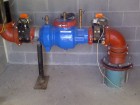
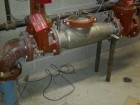
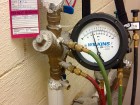
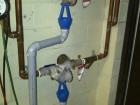
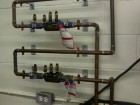
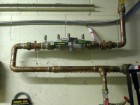
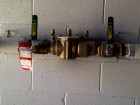

So what is ultimately the difference between a BFP and a check valve?
It makes sense that a backflow preventer wouldn’t prevent basement flooding. I think that it makes sense that you would need to have backflow testing in addition to a preventer. That way you could be sure that everything is working well in your pipes and won’t lead to any flooding or damage.
Its a great post to read,i was searching for the same content. keep sharing more valuable information about the topic. I am interested in looking for more of such topics and would like to have further information.